Chris and I popped to the New Forest for a night and stopped at the new Bombay Sapphire Distillery in Laverstock, Whitchurch. I’ve been wanting to go to see Thomas Heatherwick Studio’s extraordinary custom glasshouses but hadn’t appreciated they had transformed the entire plant.
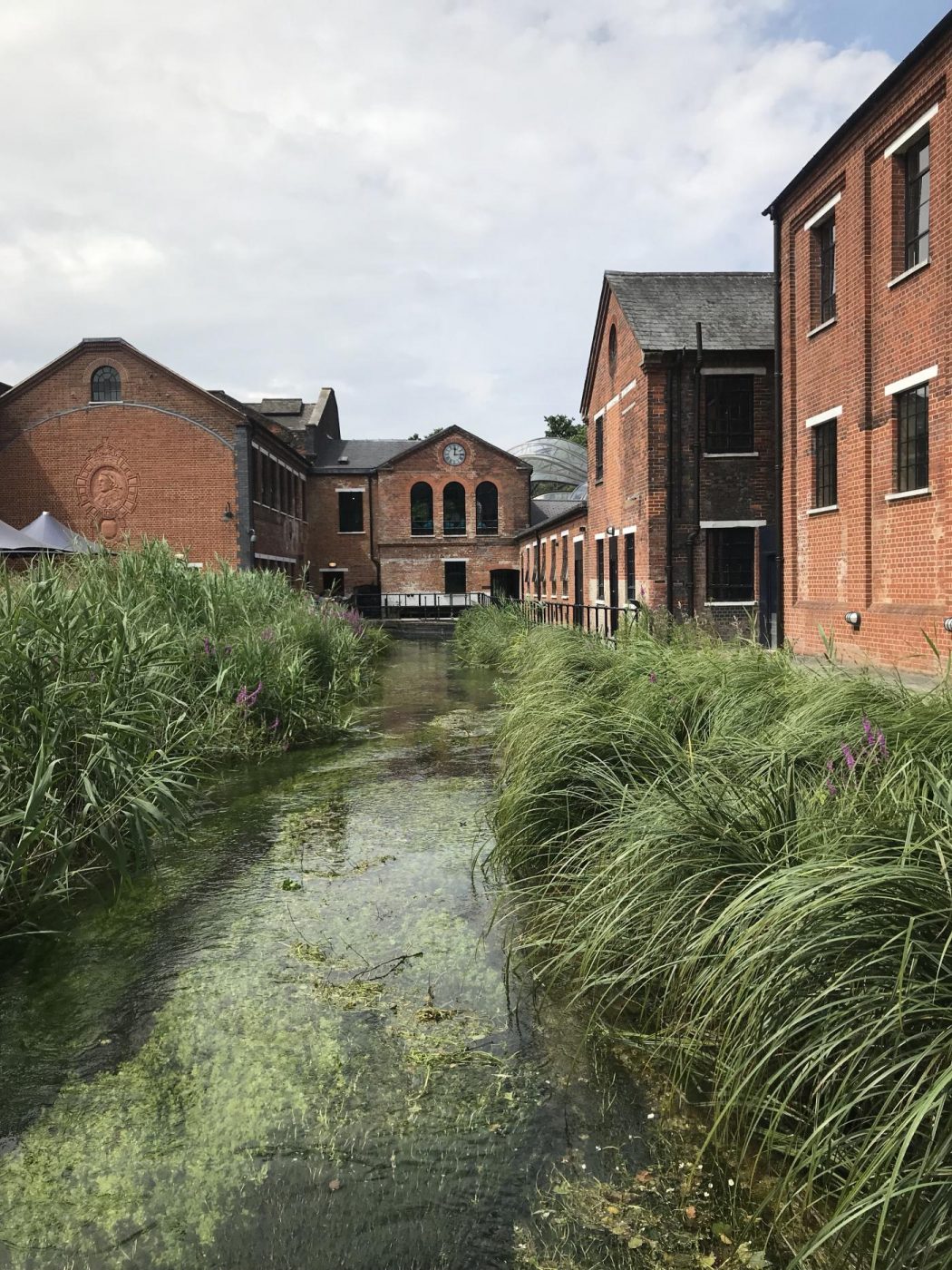
The mill is old enough to be recorded in the Domesday book and until a few years ago was a paper mill. Heatherwick studio stripped back the entire site, and a key feature is to reveal more of the crystal clear chalk river called the Test. It’s not used in the gin but revealing such a unique, naturally clear stream creates the pulse of the location.
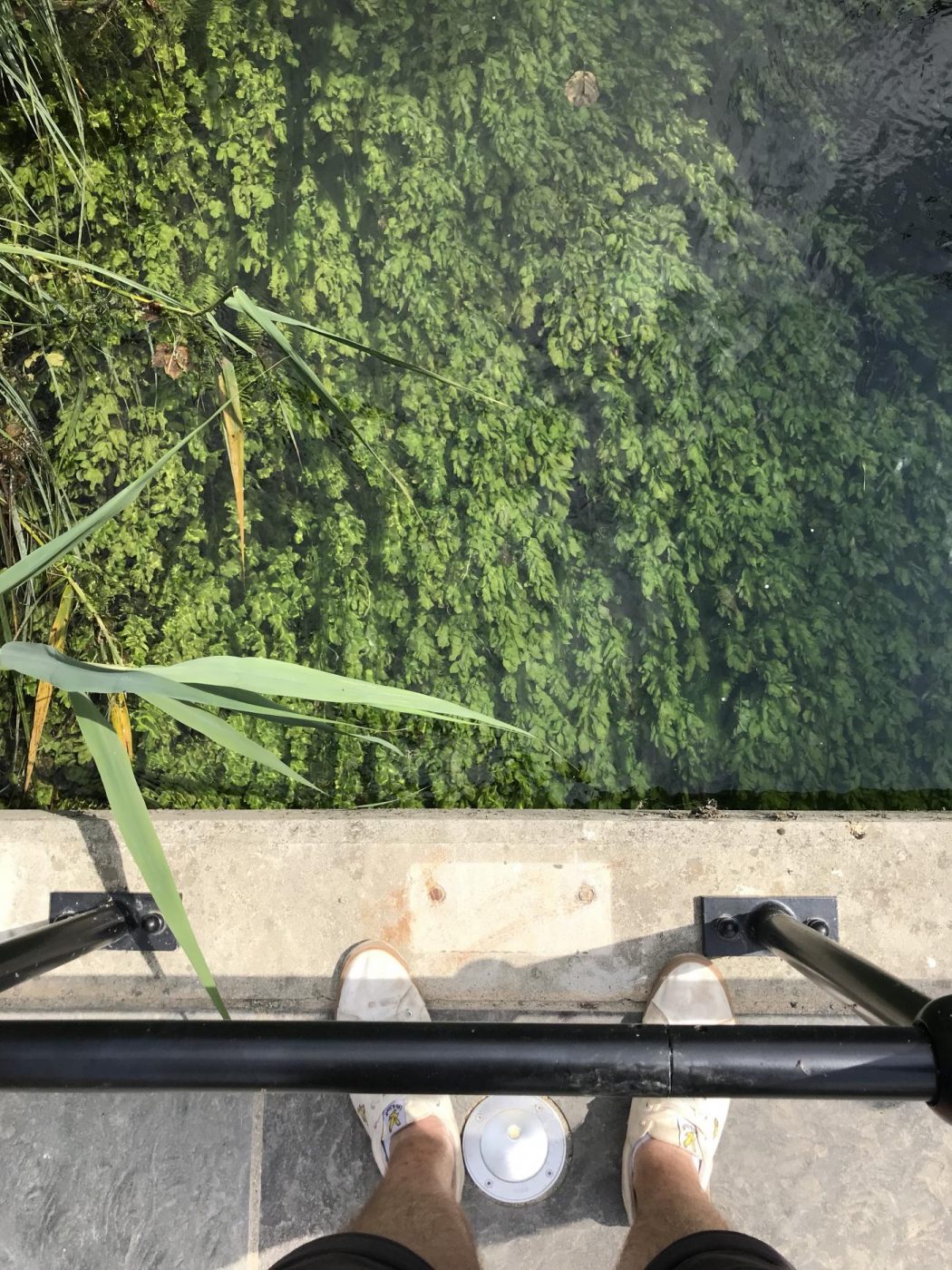
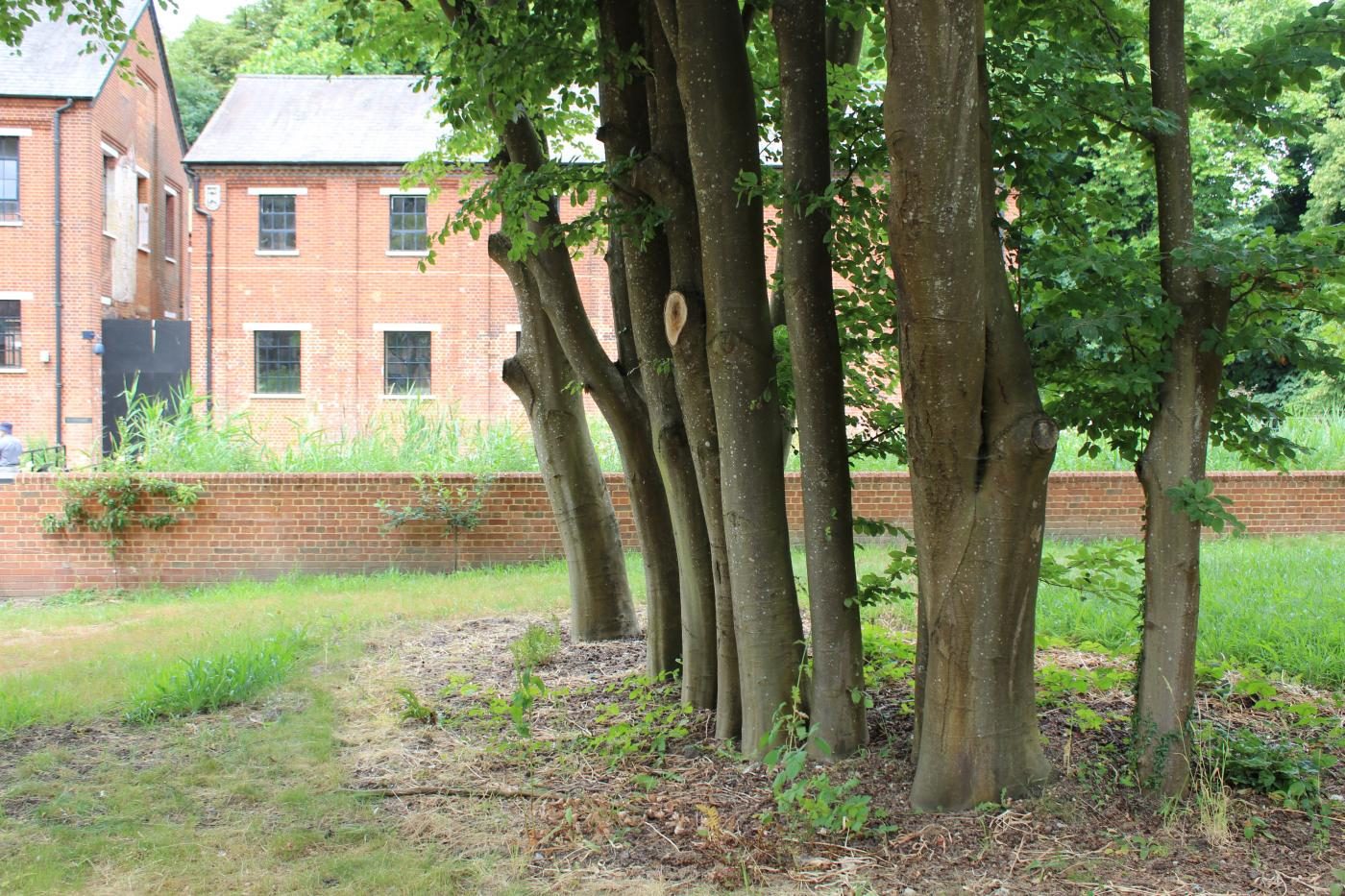
I noticed the above line of very closely packed trees, in itself sculptural.
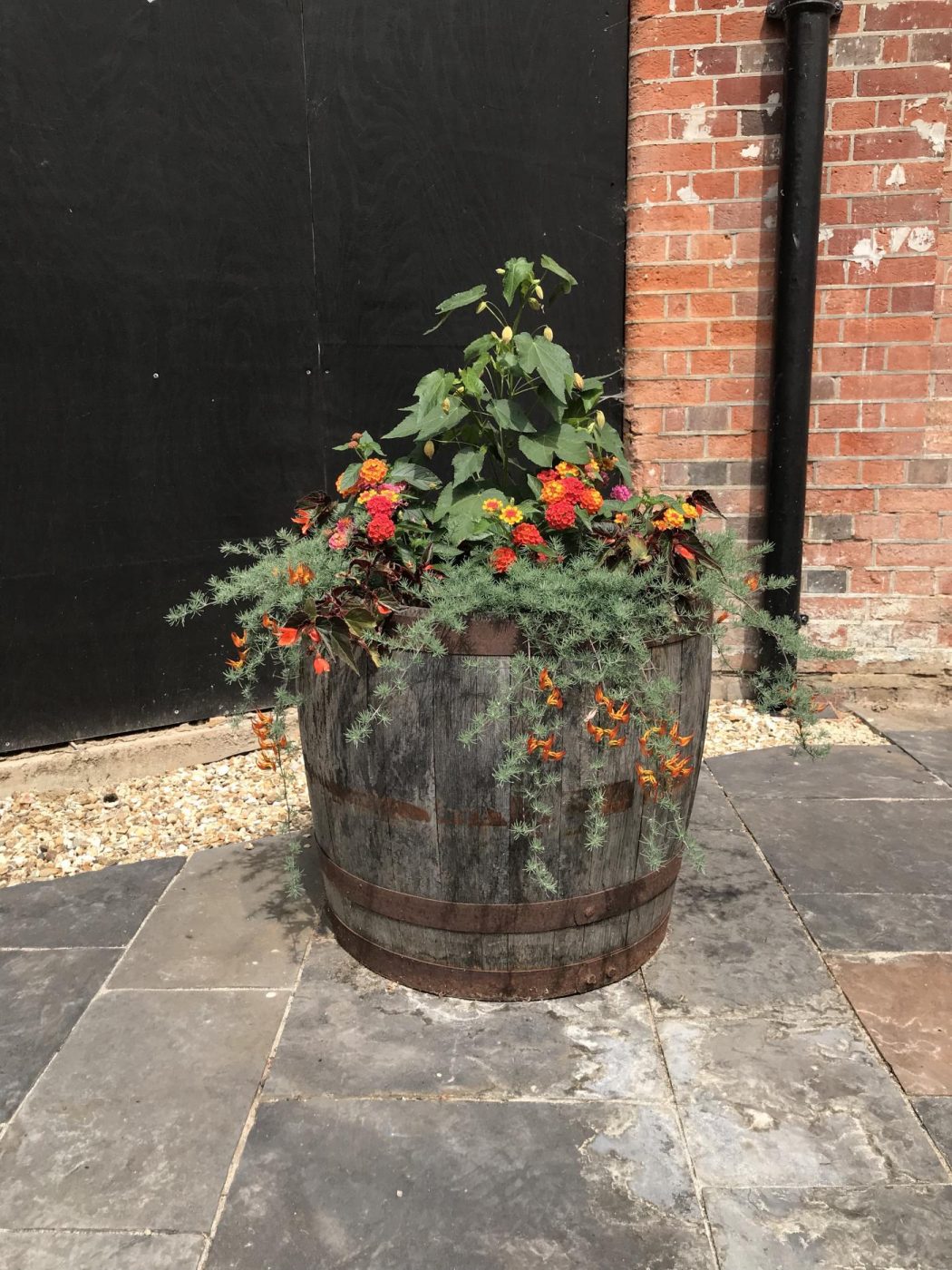
There is a small tour on site explaining the gin making process and the way gin is produced from infusing botanicals to create the flavour. Design, gin and edible plants. Perfect.
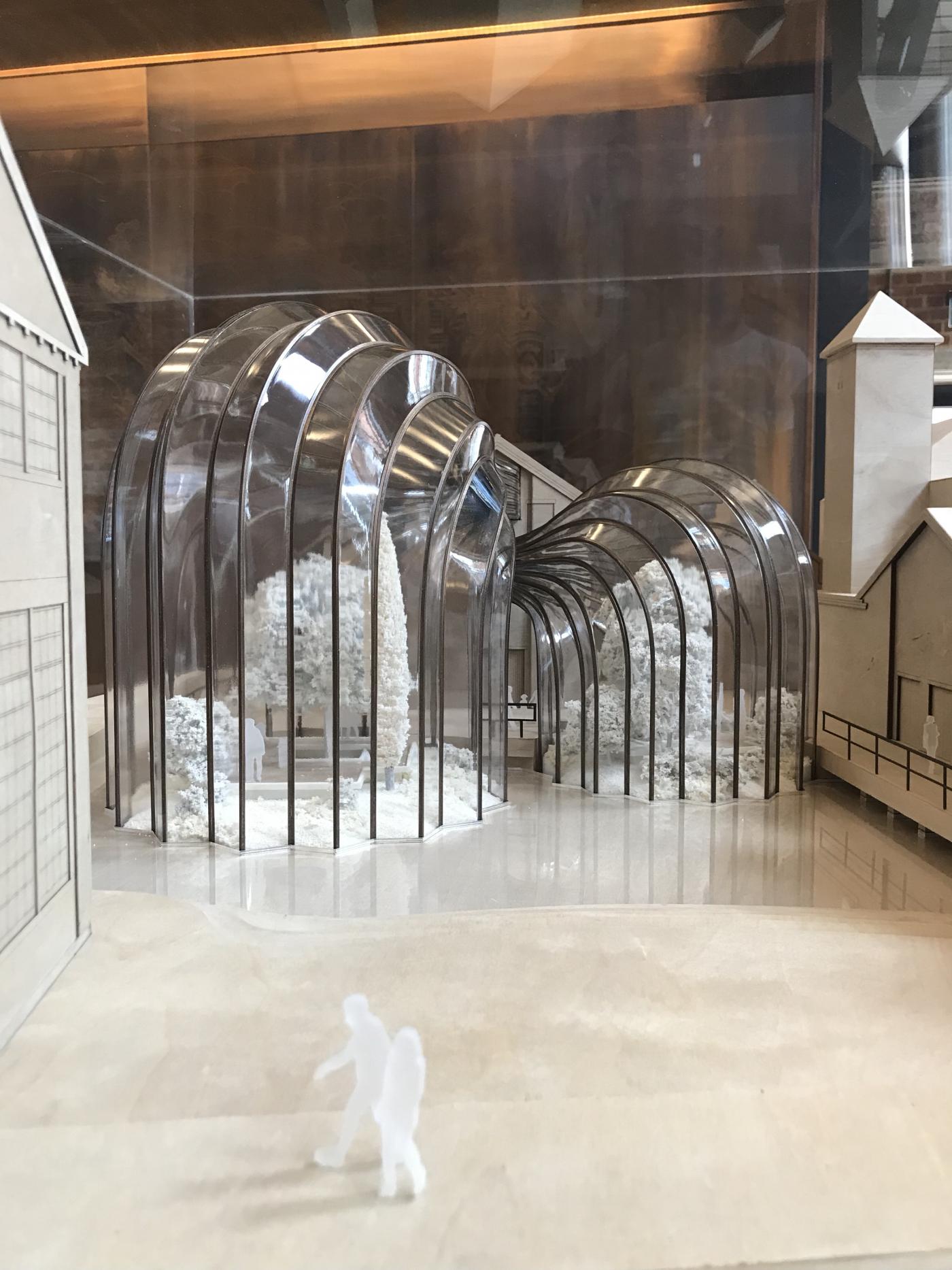
The model for the curved, custom glasshouses. One glasshouse has a Mediterranean atmosphere, the second a tropical atmosphere. These represent and grow plants used as the botanicals in Bombay Sapphire gin. Seeing the glasshouses, they’re as remarkable and beautiful as expected – cue photo shoot:
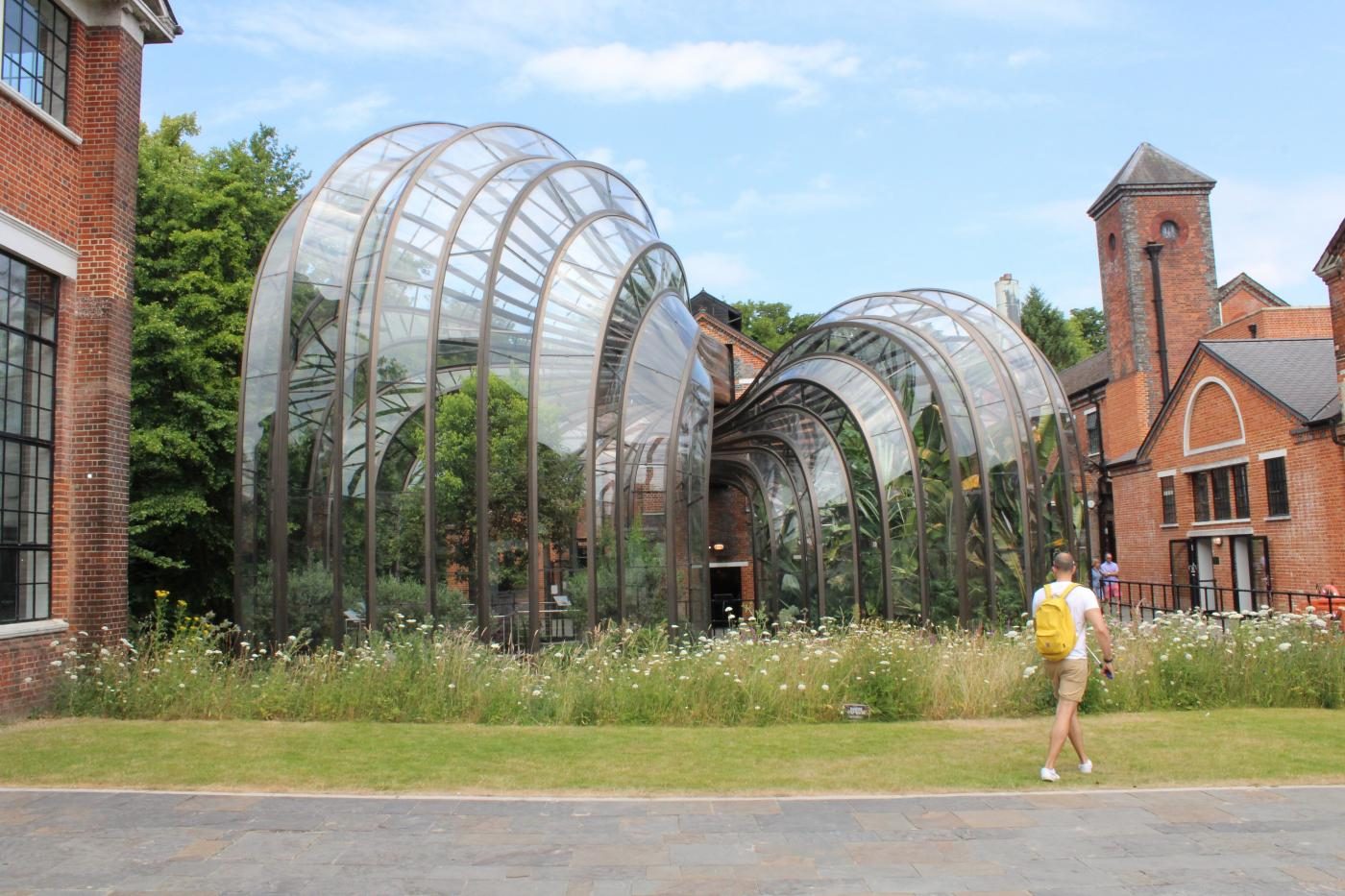
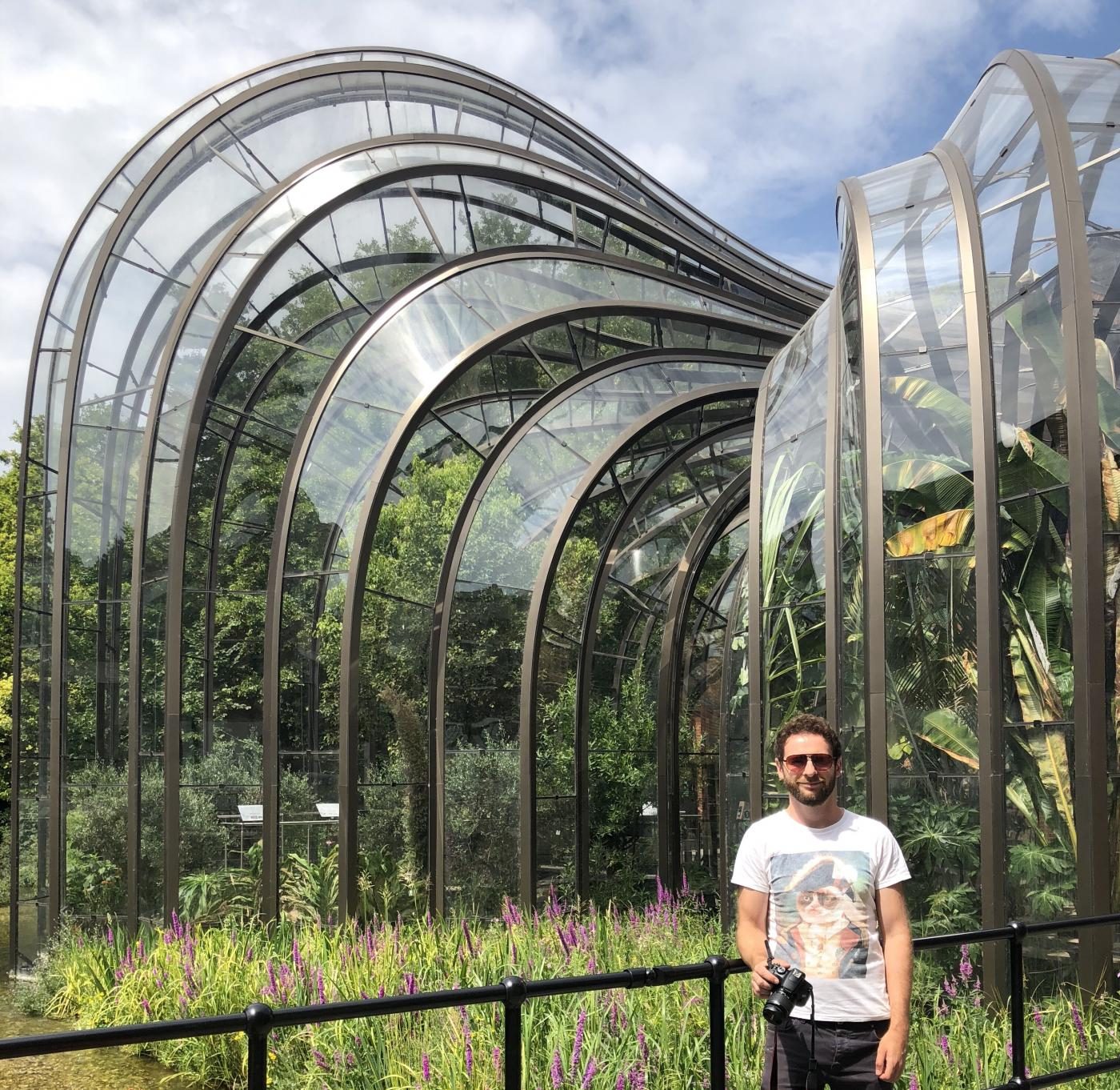
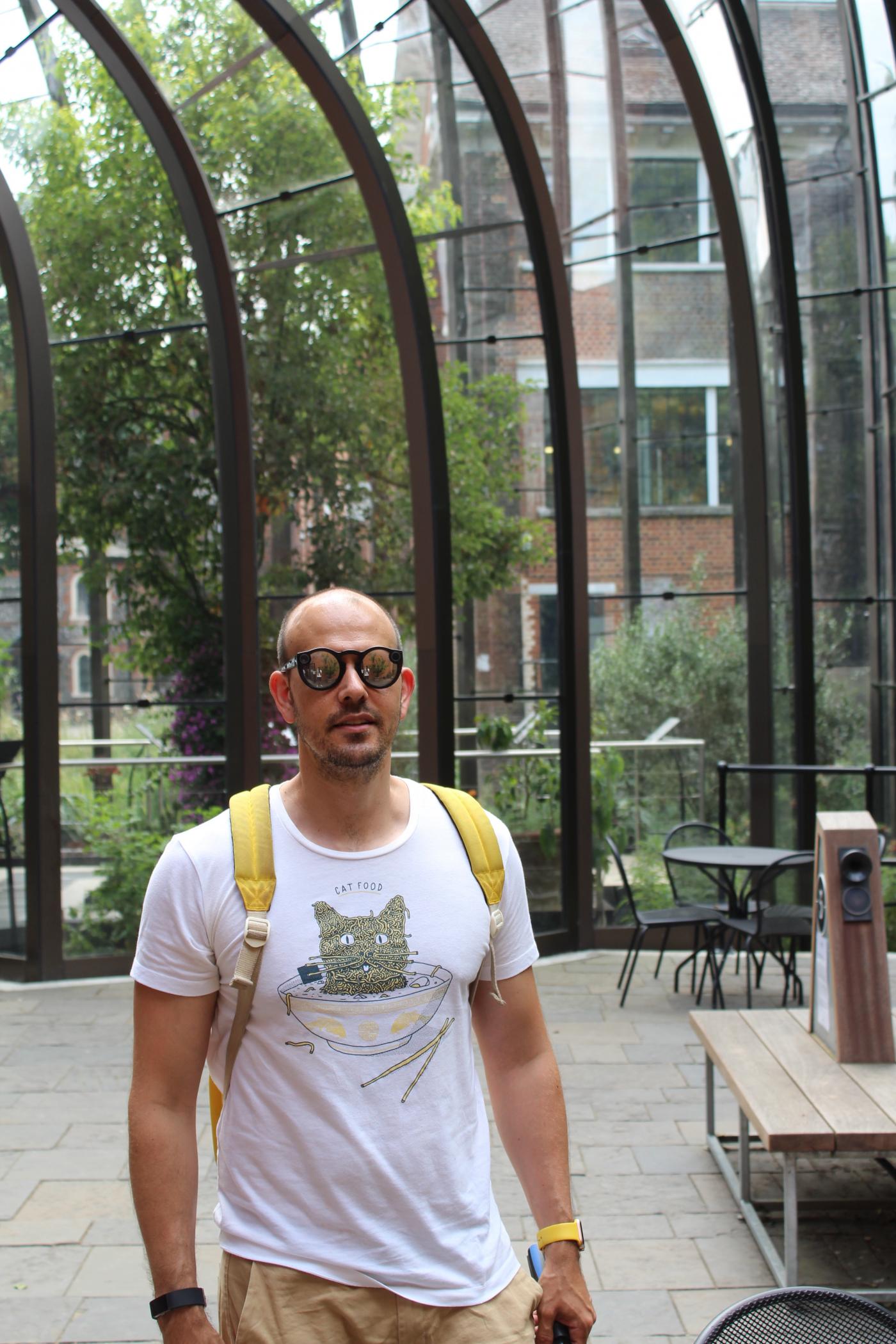
The glasshouses represent gin pouring out at the end of the production process. They’re not big – don’t visit expecting Kew Gardens – but they are unique and beautiful. Flanked on one bank of the river by a wild flower meadow, on the other a water wild flower meadow (using marginal plants).
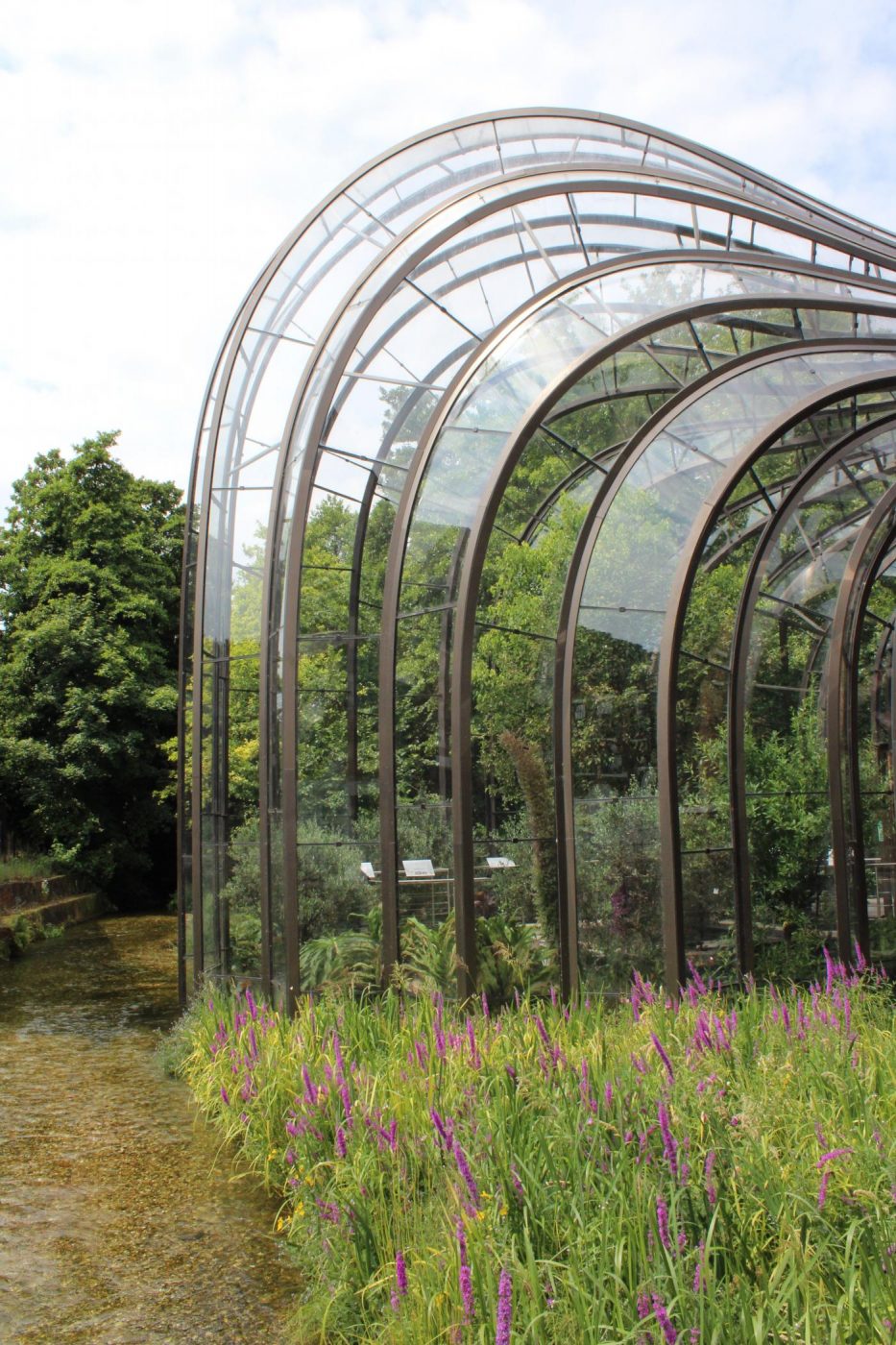
Metal is curved in a unique form that uses spare heat from the gin making process to warm them.
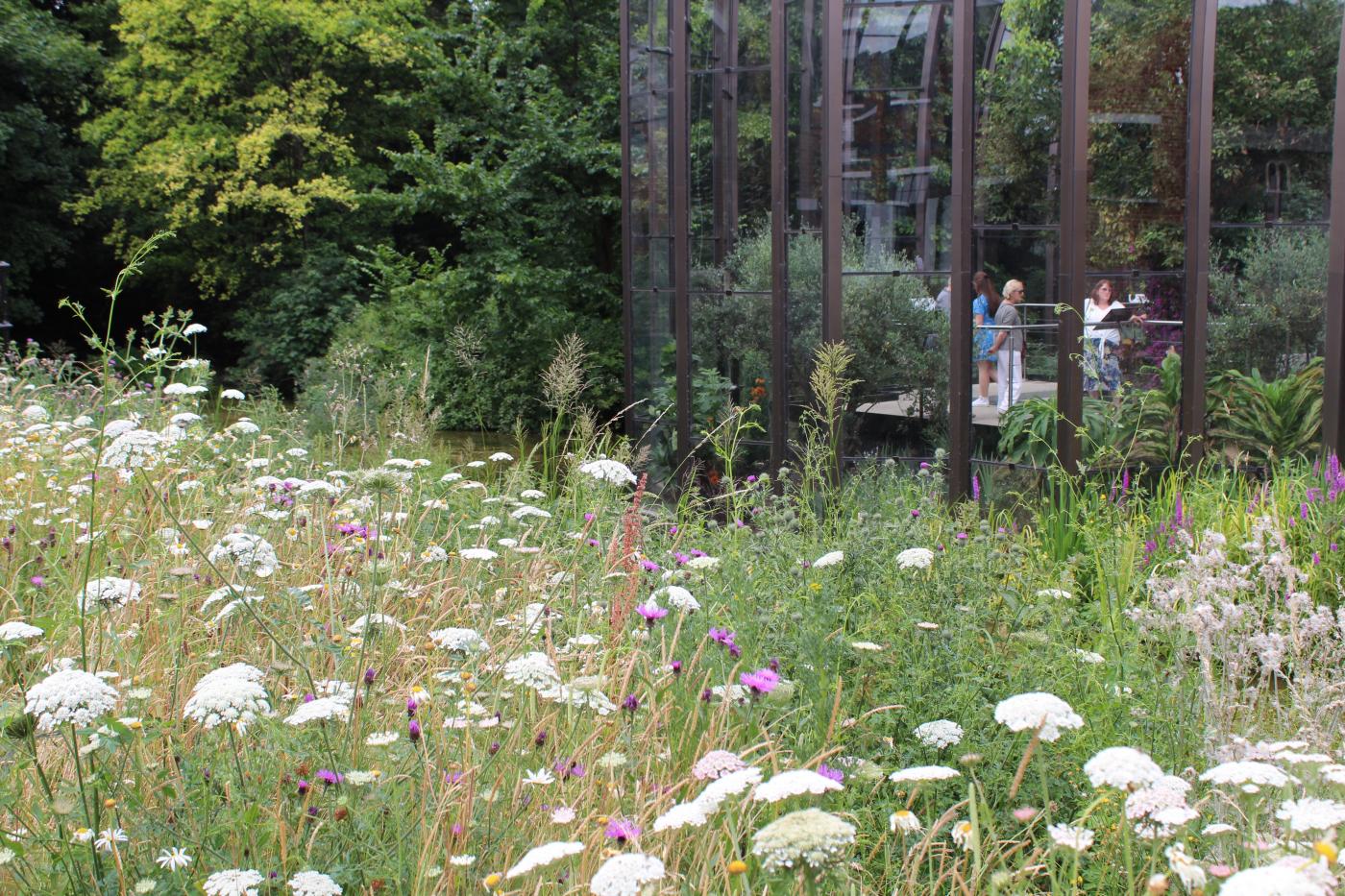
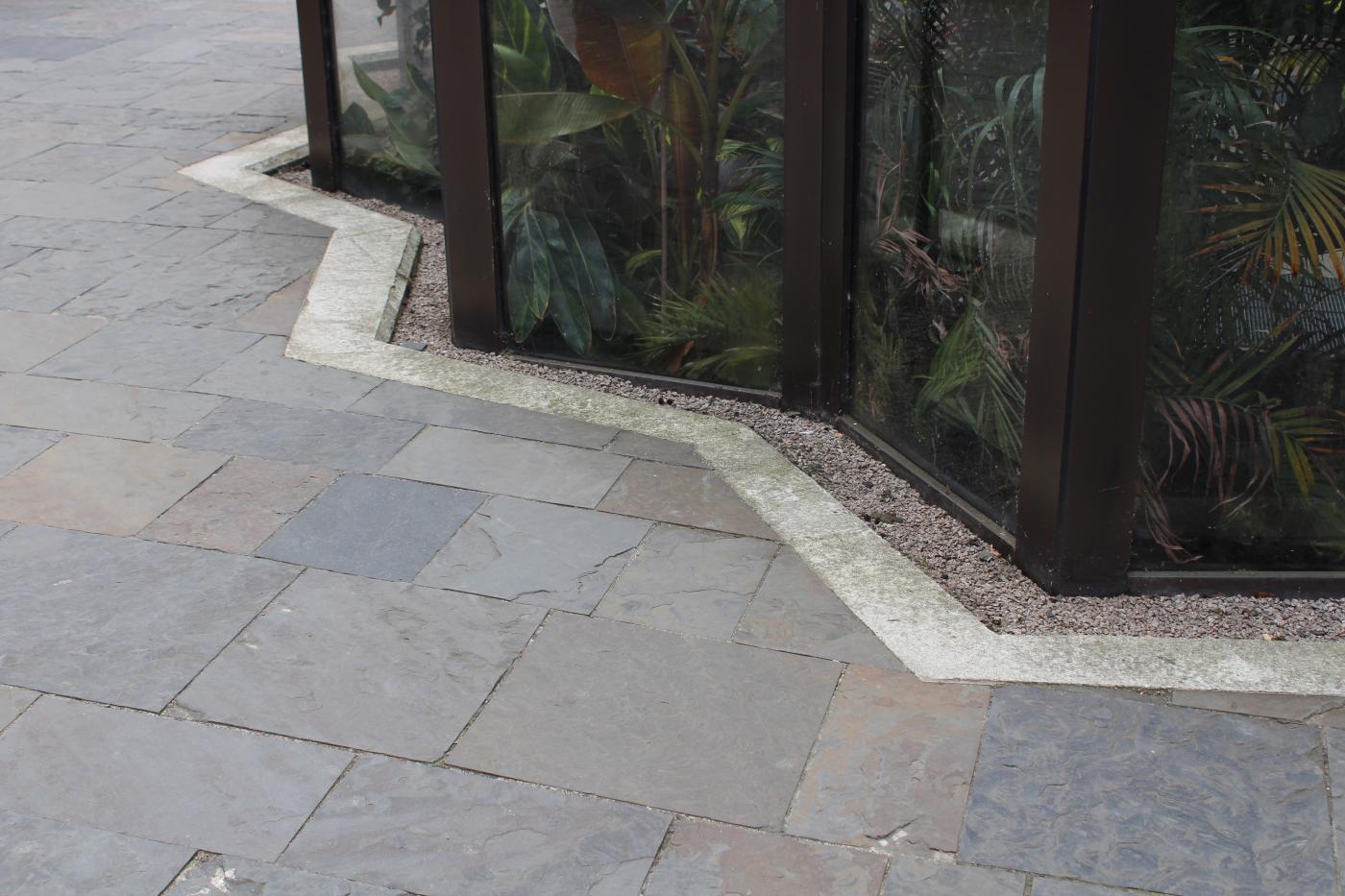
The detail on the glasshouses is precise and impressive.
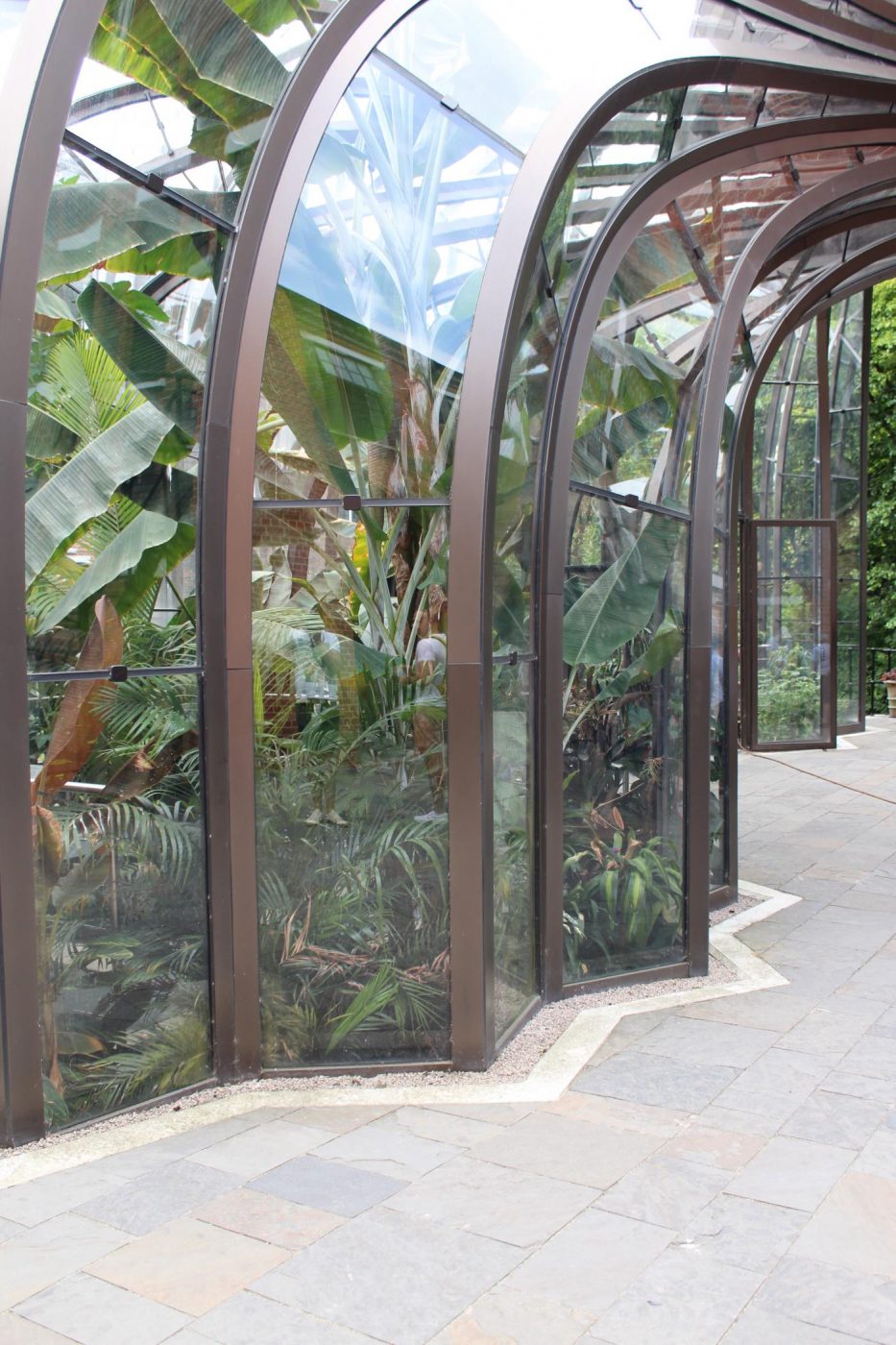
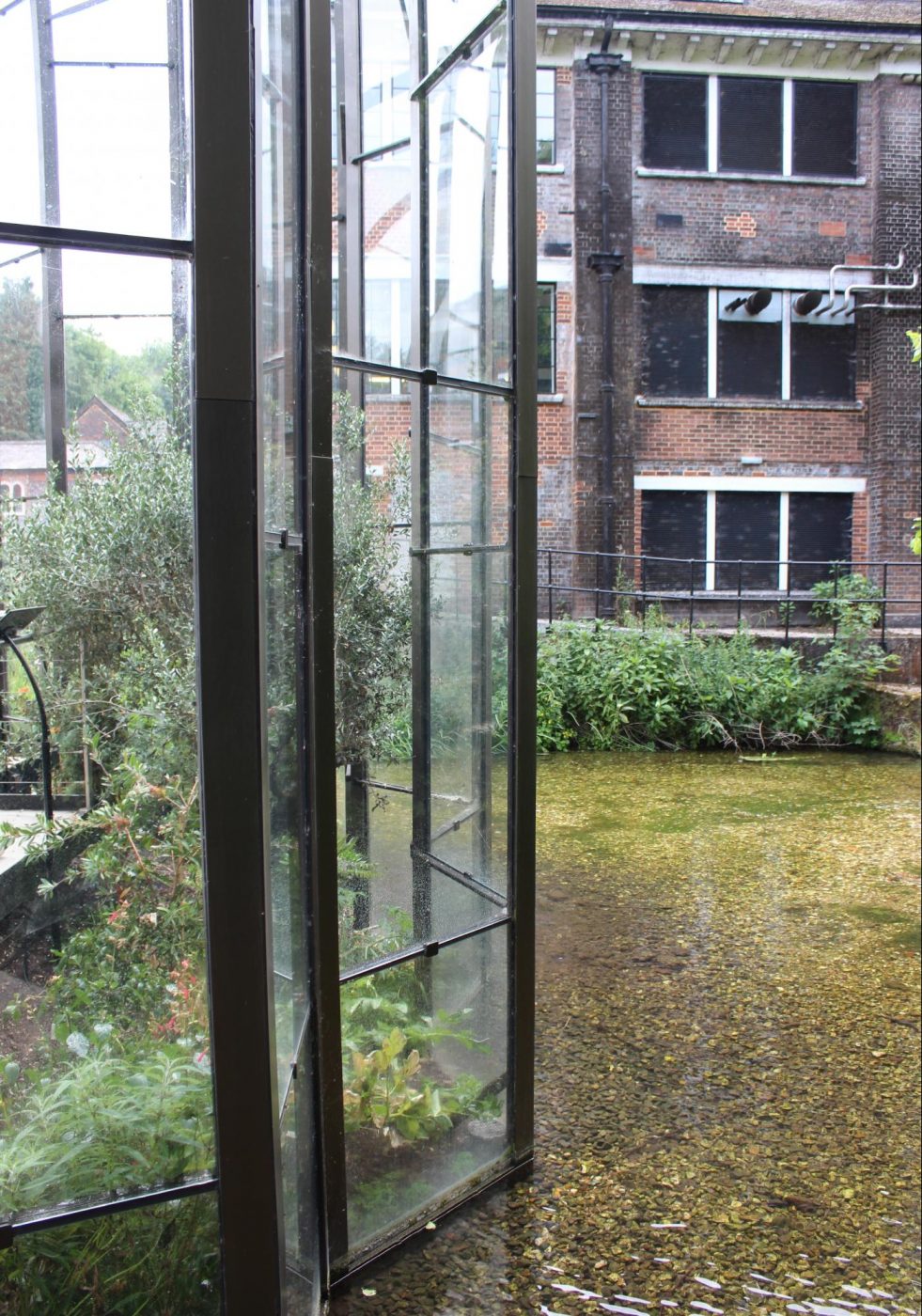
I was particularly taken by the fact the glasshouses are sunk into the river bed.
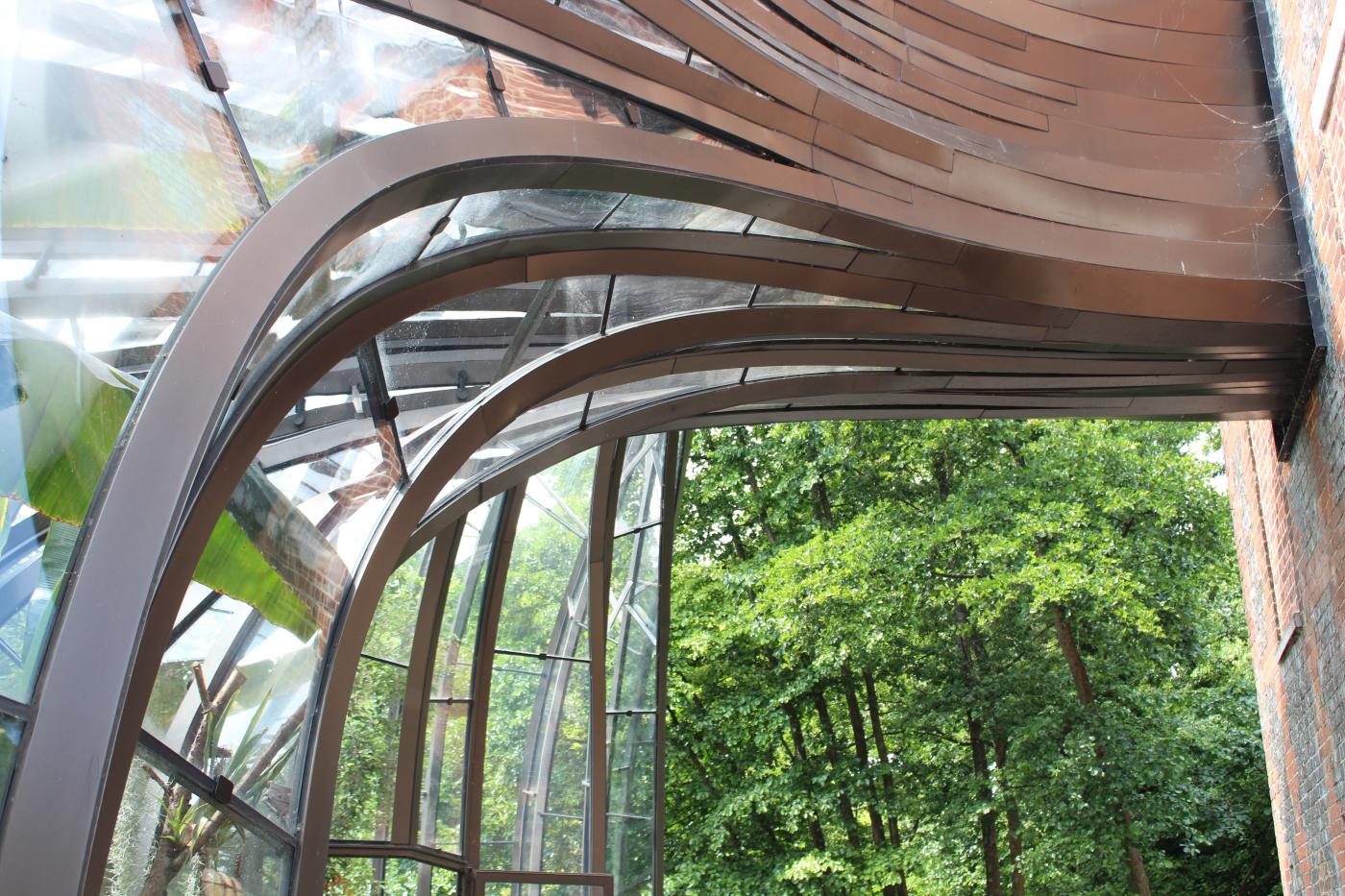
Curves in buildings are quite rare because they’re so difficult and therefore expensive to create. The mind boggles at the webbed metal and curved glass here. It’s amazing design and engineering. Kudos to Bombay Sapphire for investing in something iconic.
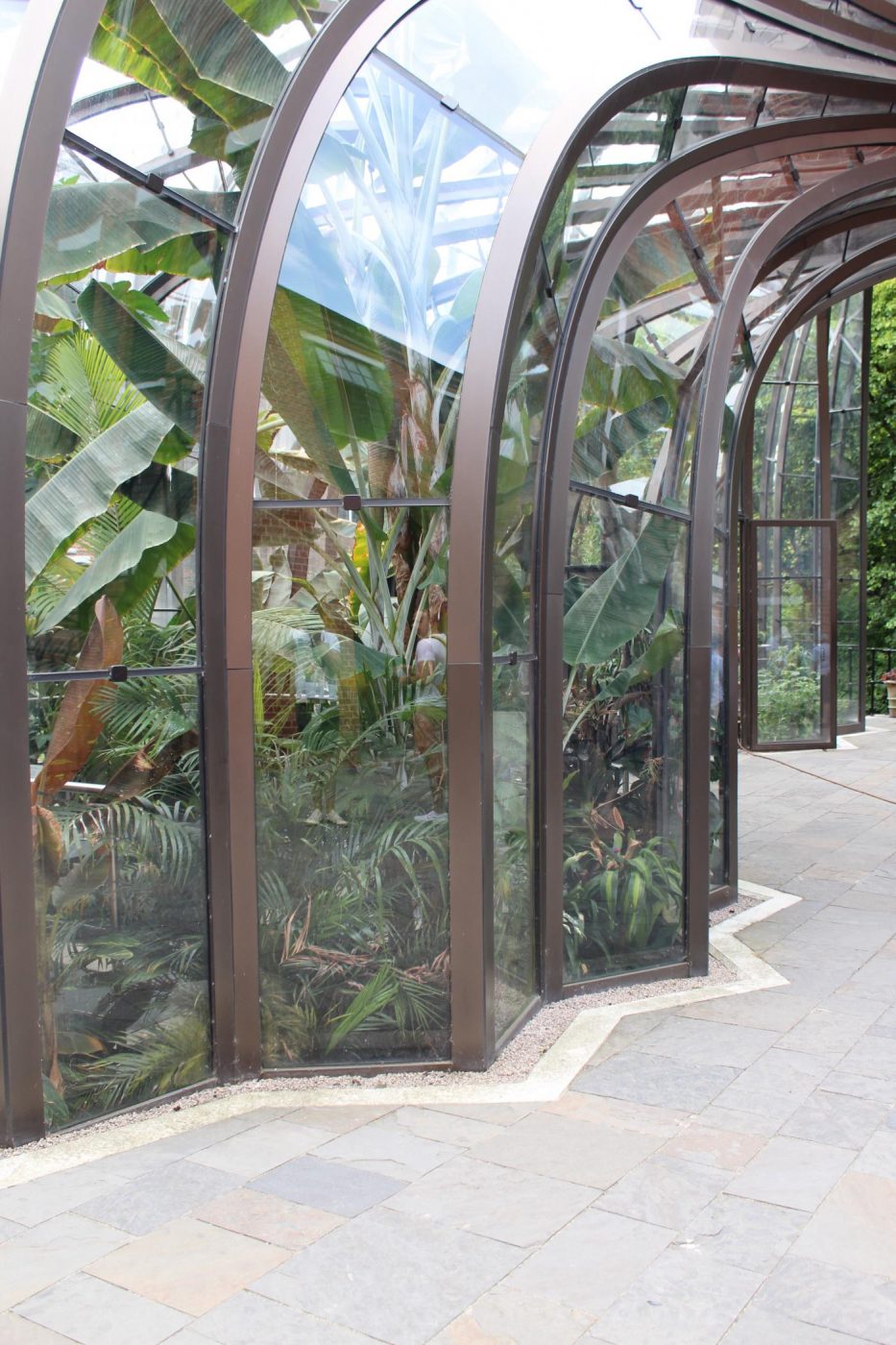
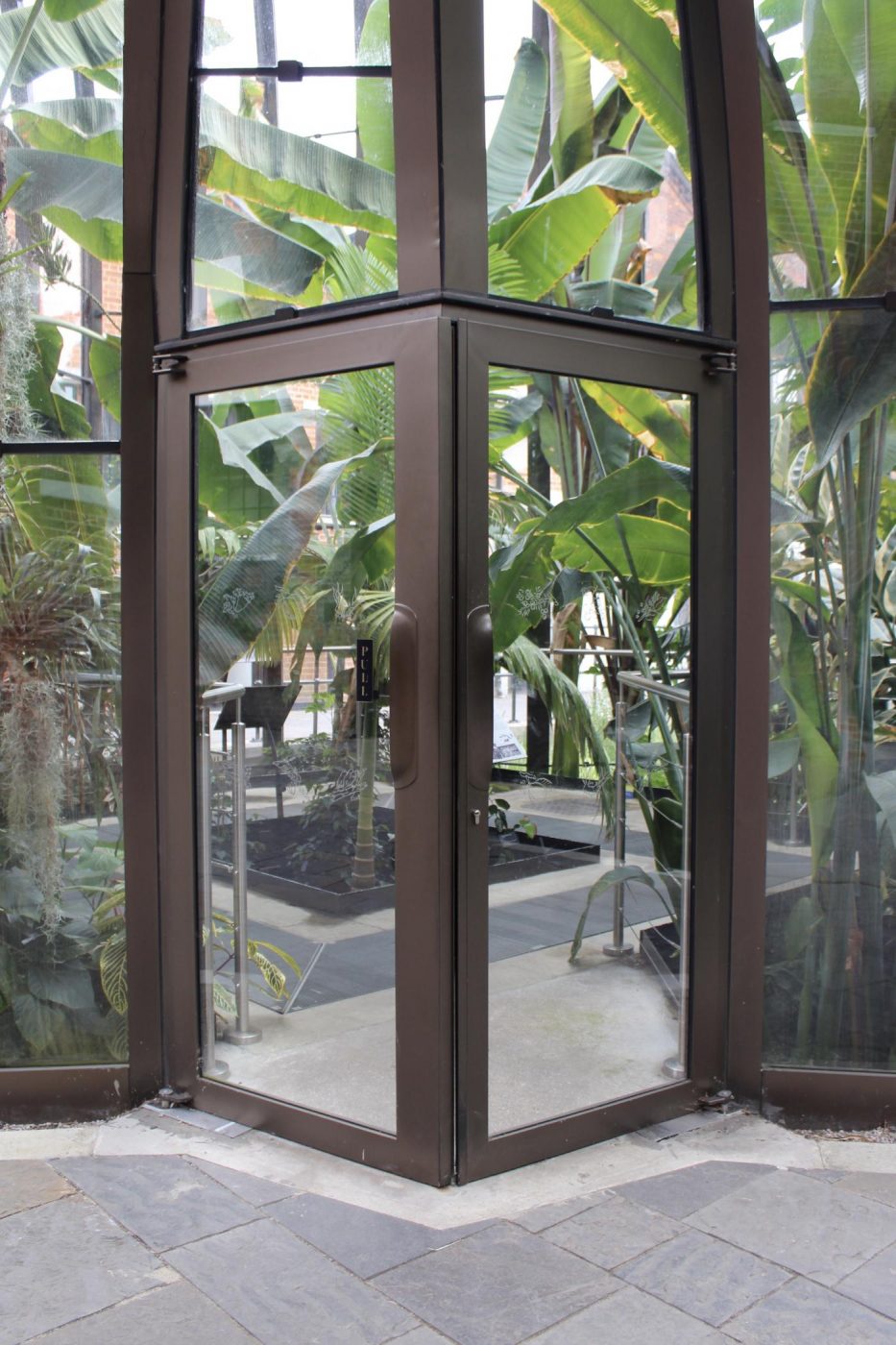
Although plants in the glasshouses aren’t themselves used in the process, they do represent many that are used. There are others used for visual effect only too but from the same regions.
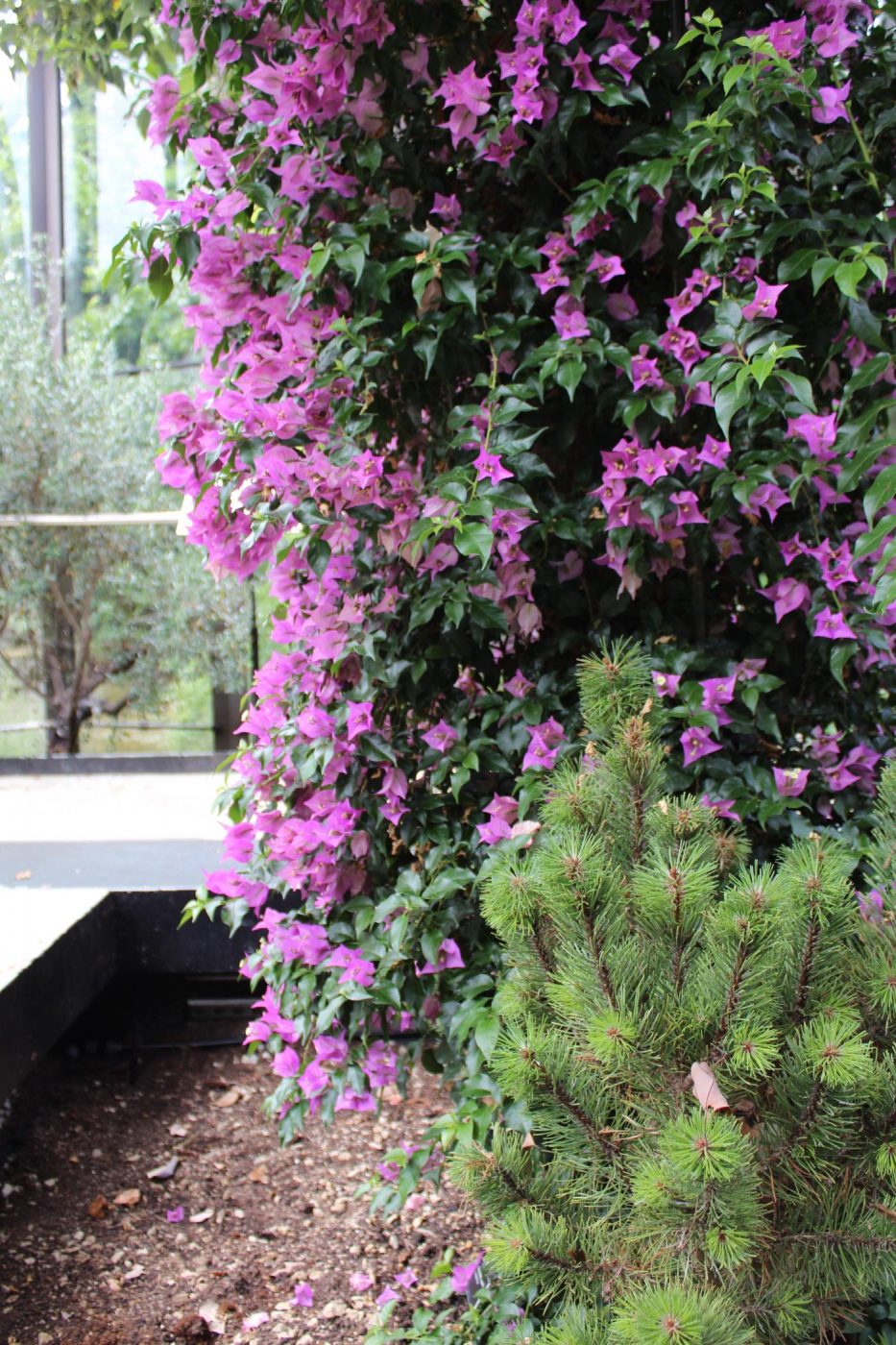
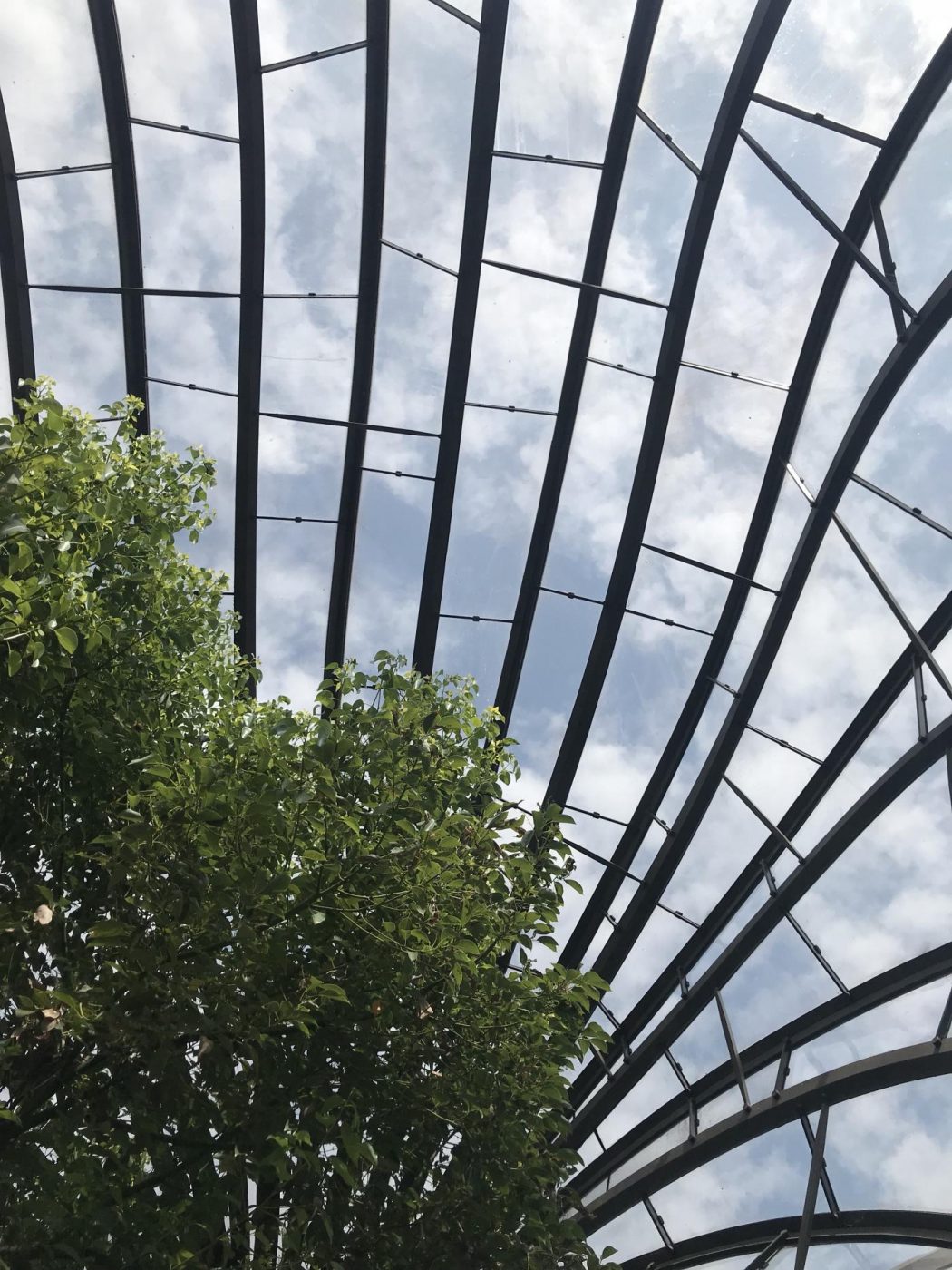
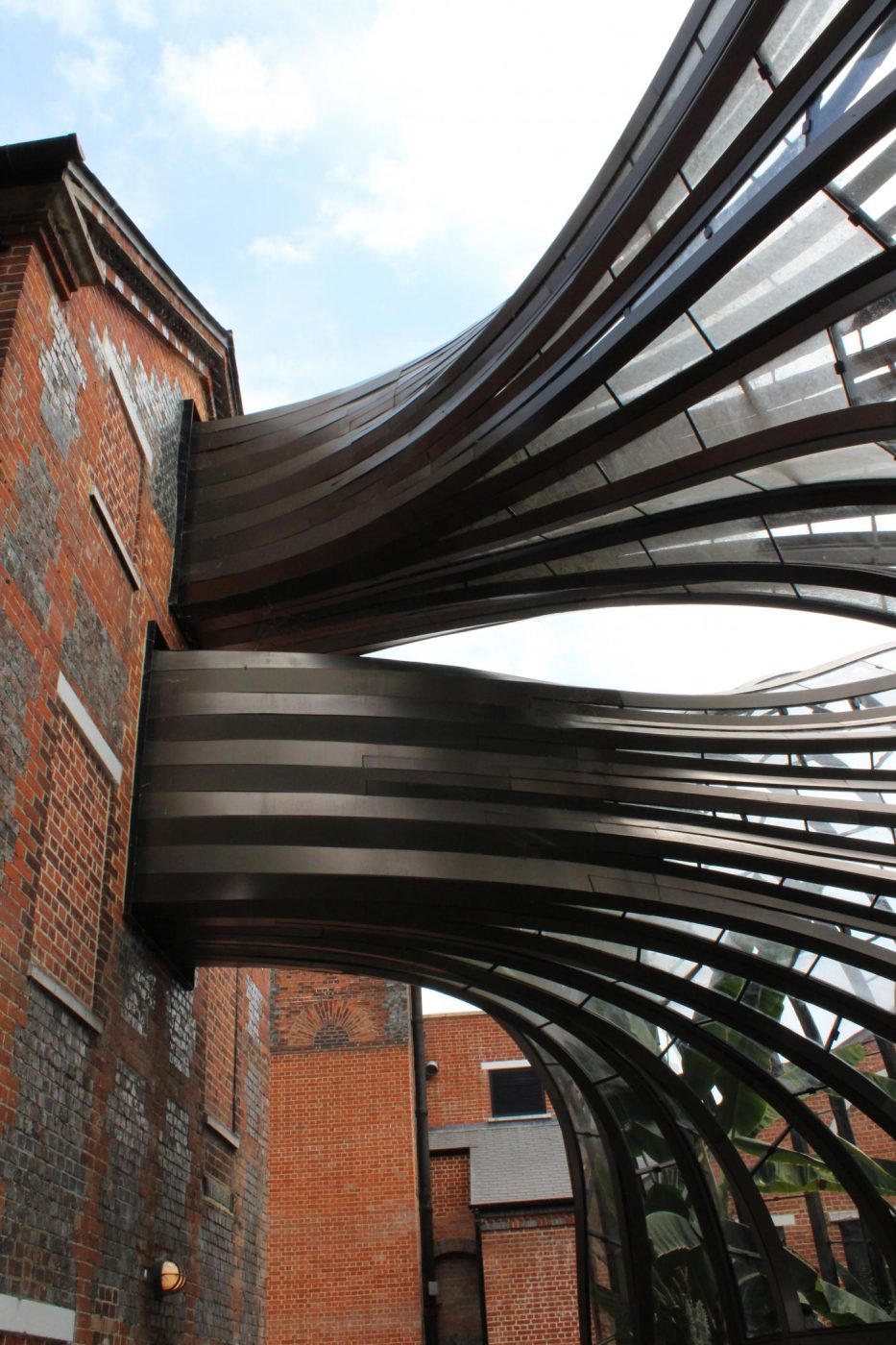
For me the star of the Bombay Sapphire Distillery is the glasshouse structure and plants around it. However the tour is a surprising piece of education. We were taken through a working distillery (albeit a much smaller version for public show) and shown how gin is made. As I care about the contents of what I eat and drink, it was reassuring and interesting to learn the process.
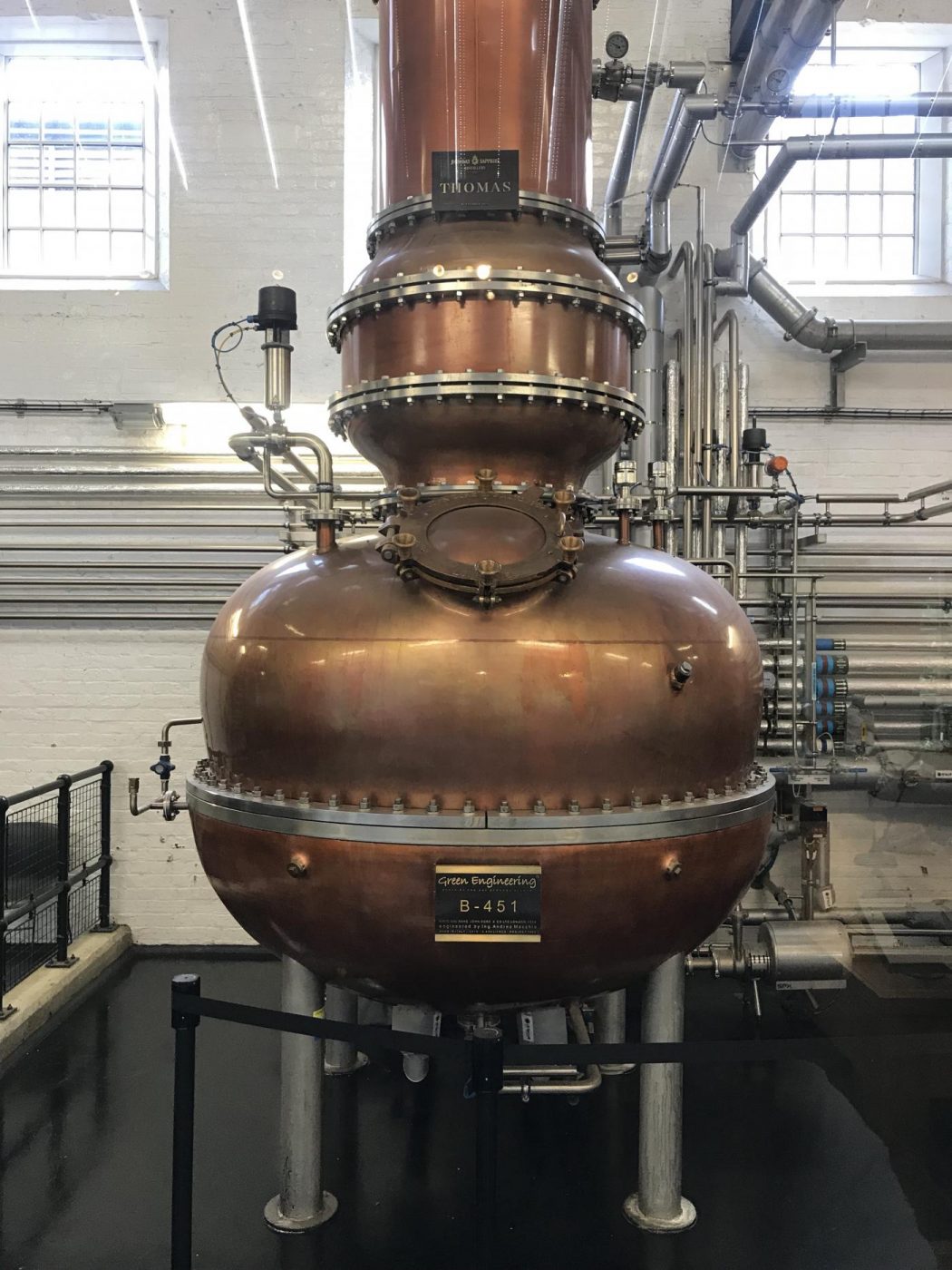
A highlight was the opportunity to see, touch and smell the individual herbs and spices used to create or add extra flavour to gin. The tour lets you choose your favourite from these to try in the closest matching cocktail in the bar (as the driver I had non-alcoholic).
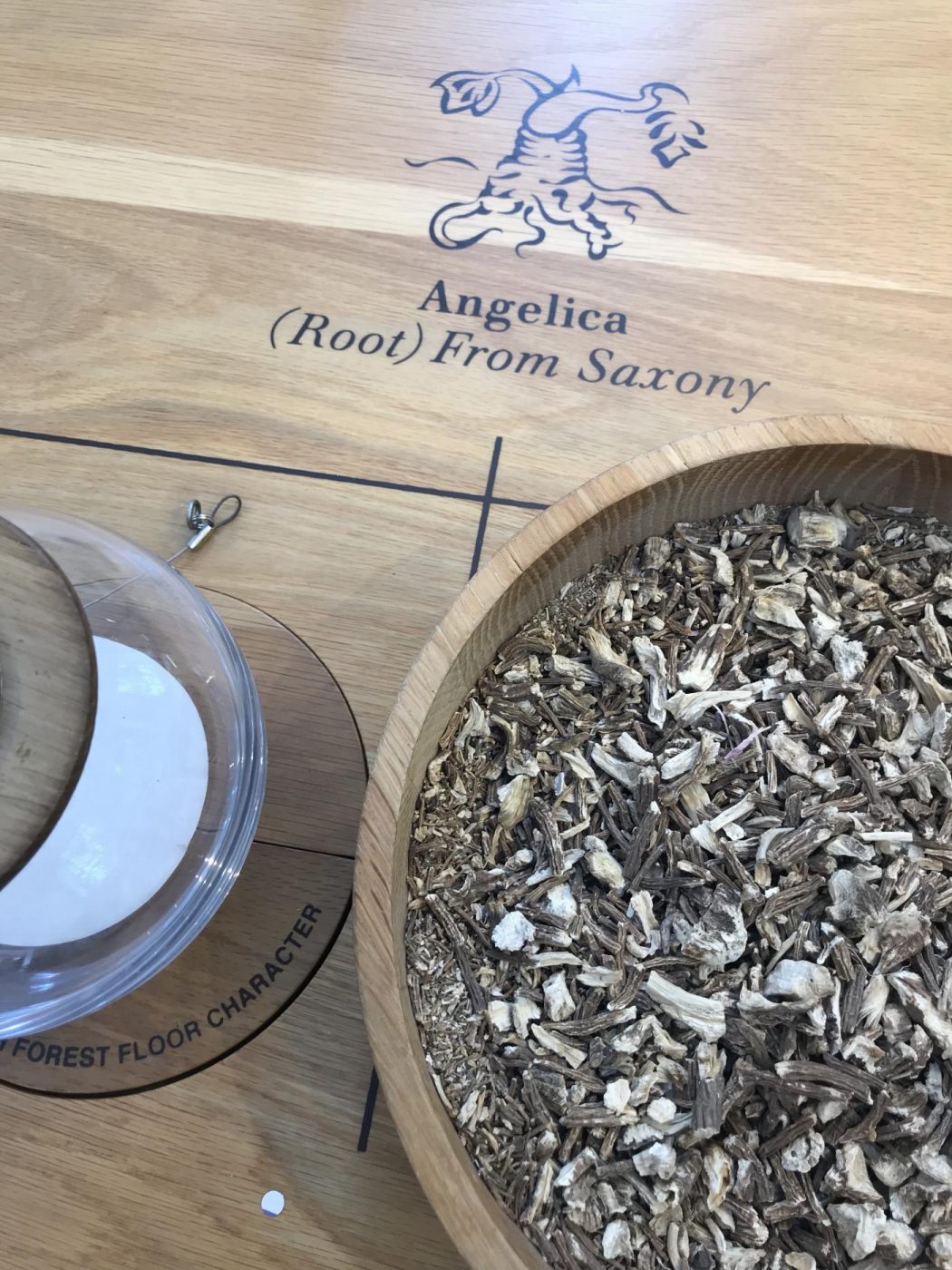
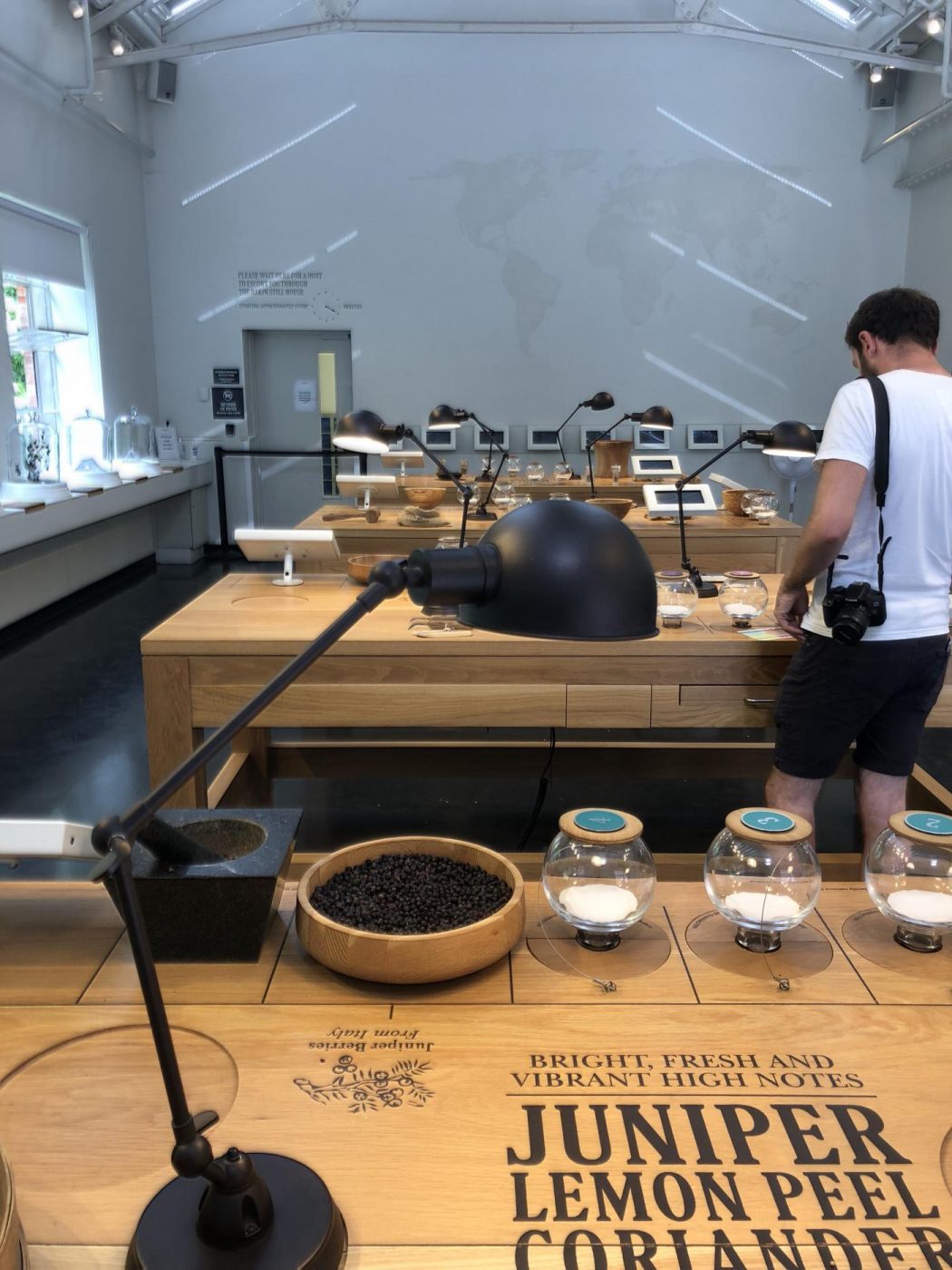
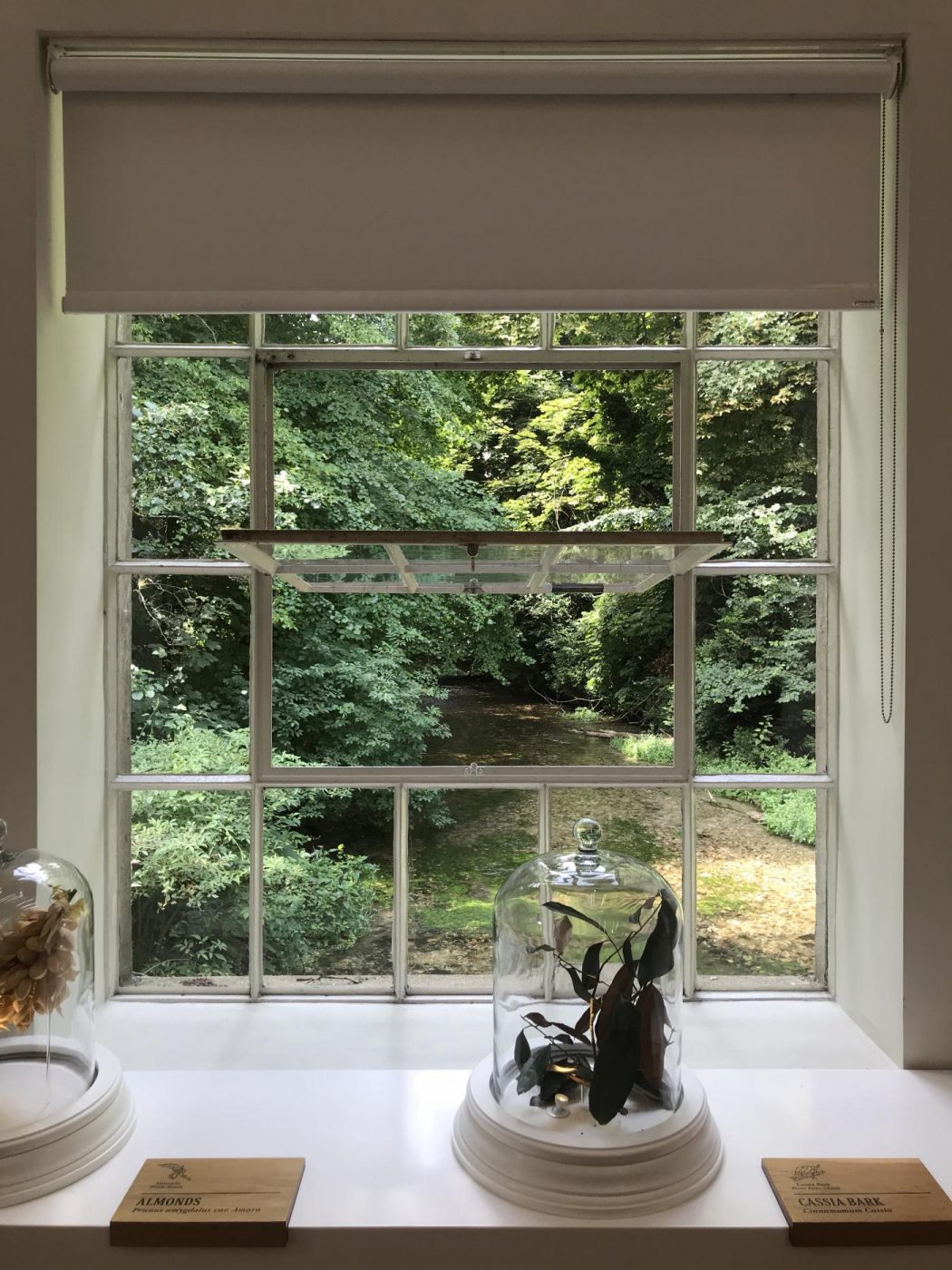
The Bombay Sapphire Distillery tour was a great way to spend an hour or two, which is plenty of time to visit the site (note entry is fairly expensive at £16 per adult, though that does include a cocktail). It is a working distillery and all Bombay Sapphire comes from it, though the main areas are in larger buildings away from public. Overall I enjoyed learning about a drink we buy regularly and finally seeing Heatherwick Studio’s glasshouses. The site had some wonderful planting when we visited, especially along the clear river Test. Hopefully the garden elements of the site will be well funded for maintenance and future development as one of the major draws of the location.
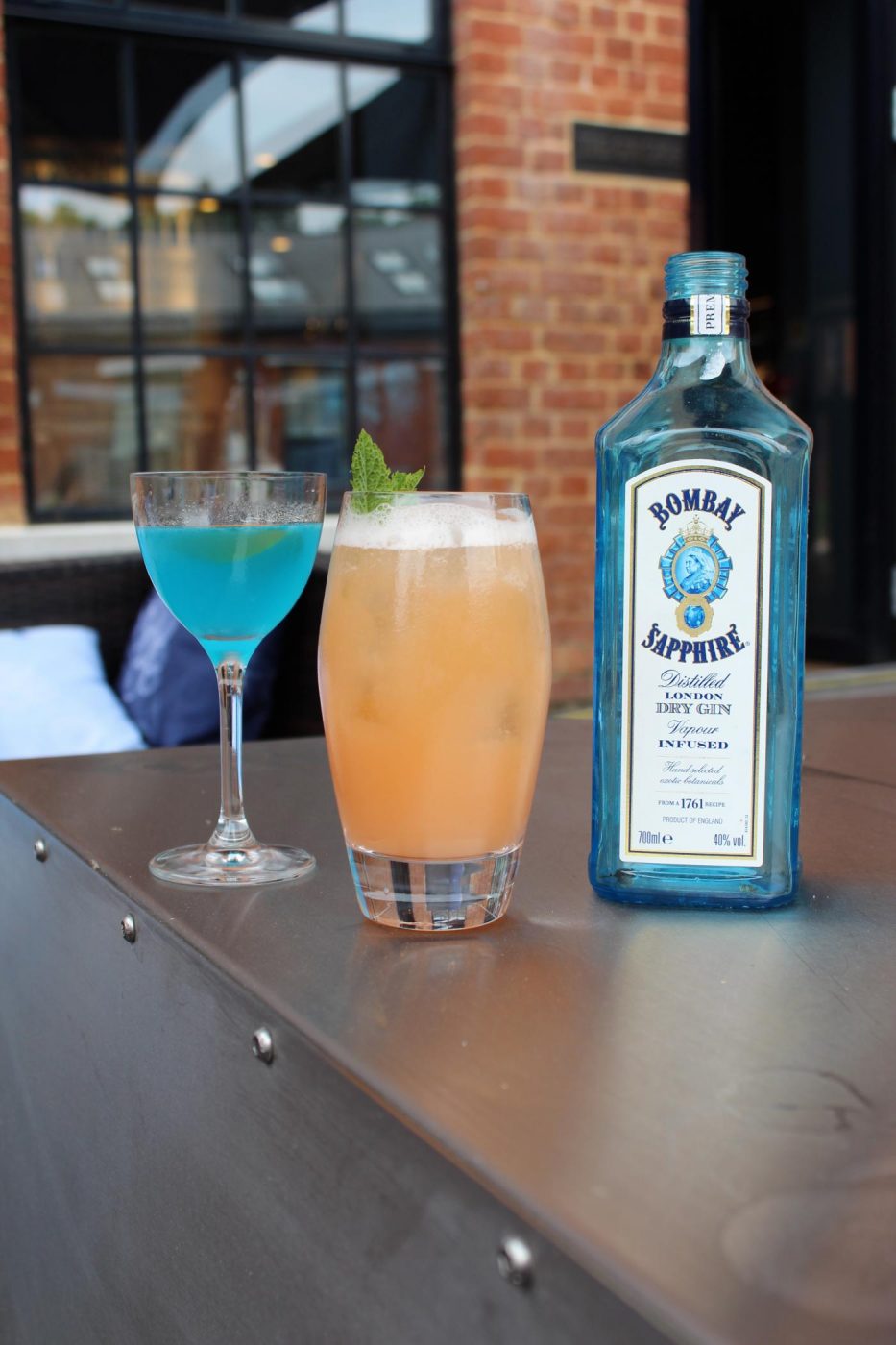
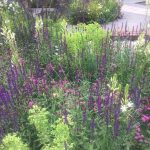
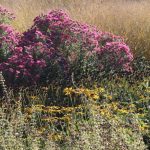
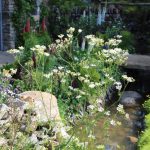

The glasshouse was totally cool, thanks for the detailed photos, explanation, and virtual tour. So too, the Cat Food t-shirt that Chris is wearing is EPIC! Gotta get me one🐱
Great post and photos. Amazing engineering and bliss for a gin lover!